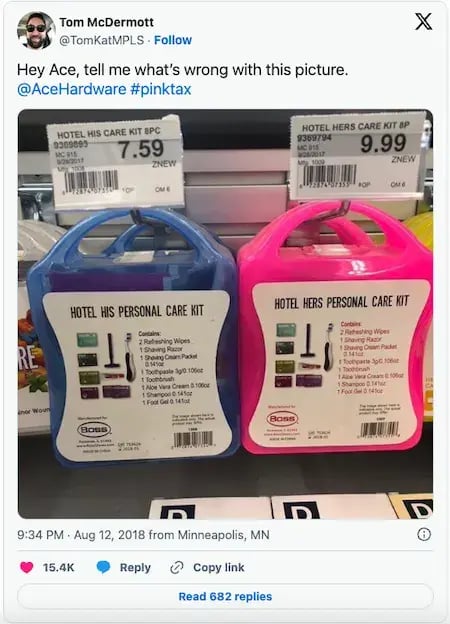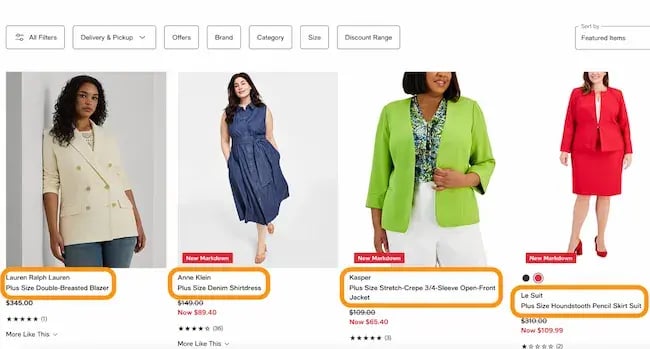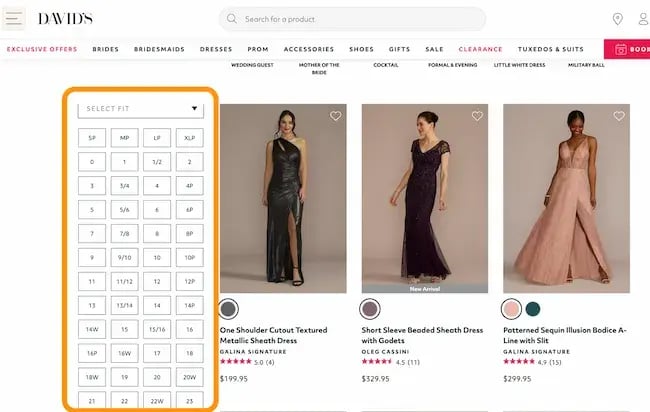Welcome to Creator Columns, where we bring expert HubSpot Creator voices to the Blogs that inspire and help you grow better.

I’ve been an inclusive marketing strategist and consultant for seven years. My entry into this space was heavily influenced by my lifelong experiences as a frustrated consumer.
Several components of my identity make me different from what is often considered to be “mainstream.” And as a result, brands didn’t often serve me well because of the things that make me different.
Some Consumers Consistently Have Less Than Ideal Customer Experiences
I conducted a research study for a client in 2022 to understand how consumers of hotels and bed and breakfasts think about belonging.
Here’s what a few consumers who are part of underrepresented and underserved communities had to say about their subpar customer experiences:
- “People with food allergies and restrictions should have an opportunity to get everything that they paid for.”
- “I wish they realized that larger people want to travel and feel as though our money is as important as straight-sized individuals. Oftentimes, larger guests will find themselves with tiny towels, hard-to-reach items, not much space between furniture.”
- “I’ve stayed at numerous places where there was nothing to eat on the menu for me (vegan) and staff was not open to making adjustments.”
- “I need grab bars in the shower.”
- “People are allergic to feathers.”
This frustration doesn’t just exist for some hospitality industry consumers. It often impacts people across the board who are part of underrepresented communities. Historically, brands have done a poor job of serving these communities well.
A comprehensive study commissioned by beauty retailer Sephora showed that 2 out of 5, or 40%, of retail shoppers, have personally experienced unfair treatment based on their race or skin color.
Numerous studies show that women are subjected to the “pink tax,” where they are charged (and sometimes taxed, in the case of feminine care products) more for similar products such as razors, toys, and dry cleaning than men are.
One study showed women are charged 48% more for shampoo, even though the ingredients are similar. Another study showed that the pink tax costs women an extra $1,351 annually and more than $100,000 throughout a lifetime.

These less-than-ideal experiences for consumers from underrepresented and underserved communities lead to frustration and much lower conversions with the brands they have these substandard experiences with.
When people are frustrated or feel like they are treated like an afterthought, they don’t convert, don’t make repeat purchases, and don’t achieve success at the same rate as others.
In this episode of the Inclusion & Marketing podcast, I do a deep dive into factors that influence your customers’ success and conversions that you should be aware of so you can fix them.
There’s a simple solution to increase conversions throughout the customer experience you deliver for all the people you want to serve.
Eliminate identity-based friction.
Here’s how to do it.
How to Deliver Conversion-Boosting Customer Experiences
1. Acknowledge the many ways consumers can be different.
Differences are common.
From the standpoint of consumers who have the problem your brand solves, there are a myriad of identities and ways in which they can be different that will have an impact on the customer experience your brand delivers.
Take the time to go through an exercise evaluating all the different ways your ideal customer could be different.
Here’s a list of common dimensions of diversity that impact the way a consumer experiences your brand, and ultimately whether or not they convert.

Once you find the different identities of the consumers you want to serve, the next step is to understand how their needs differ.
This free customer journey map template from HubSpot can help you identify how the journeys of various consumers could differ based on their identities.
Simply acknowledging that not all the customers you serve have the same need helps you expand your way of operating.
For instance, say you own a hotel and did this exercise. If the results highlighted that some of your ideal customers will be allergic to feathers, you might make different choices about the type of bedding you offer. As a result, you could deliver a high-quality and safe experience for all your guests.
Taylor Loren is a marketer who recently launched a content marketing strategy playbook. I loved seeing a callout on her sales page highlighting that the course was built with neurodivergent brains in mind.
The product offering was made to deliver a more inclusive experience because Loren first identified that neurodivergent people are a part of her ideal customer base.

2. Don’t “other” people.
No one likes to feel othered, or like they aren’t part of a group because of their differences. I often remind clients that not everyone has a great relationship with what makes them different, so they often don’t want to be reminded of this when they’re trying to engage with a brand.
Remember, belonging is the goal. The more people feel like they belong with you, the higher your conversion rates will be.
When people feel cast aside or like they aren’t “normal” they are less likely to take action to continue engaging with a brand that makes them feel that way. People who feel othered are less likely to convert.
Instead of labeling things that may make some consumers feel frustrated or upset, enable customers to find what they need without making them feel like something is wrong with them.
Some retail brands have stopped ‘othering’ shoppers who need a larger size by eliminating the “plus-sized” label from the shopping experience.
Here’s an example of a brand using the plus-sized label in a way that ‘others’ people and delivers a substandard customer experience.

Here’s an example of a brand that allows shoppers to find what they need without ‘othering’ them, thus delivering a more positive customer experience that makes more people feel like they belong.

In this episode of the Inclusion & Marketing podcast, I explored the concept of “normal” and how marketers should use it to deliver remarkable customer experiences for all the people they serve.
3. Don’t force people to ‘raise their hands’ to acknowledge their differences.
I spoke at a conference earlier this year, and my session was just before lunchtime. After it was over, I went to the buffet lunch that was set up for the attendees and noticed there weren’t any labels on the food from a food allergy standpoint.
So, I went and asked one of the servers if they could let me know which items were safe, and a few minutes later, someone brought out a prepared plate from the chef full of gluten-free items, including dishes that weren’t included at the buffet.
When I sat down to eat it, the woman next to me heard me talking about my experience of having to wait to get gluten-free food. She told me she was also gluten-free for health reasons. However, she added that she opted to guess which foods in the buffet were gluten-free because she didn’t want to say anything.
It is important to recognize that not everyone who has an identity that makes them different wants to raise their hand and tell the world about the specific needs they have.
Here’s a clip in which famed producer Shonda Rhimes shares about a time when she decided against “raising her hand” to express her need for a special accommodation, even though it could negatively impact her safety.
When working to improve your conversions by eliminating identity-based friction in the customer experience you deliver, take the time to ensure that consumers don’t have to raise their hands to acknowledge their differences and get what they need from you.
Make it so that you’ve included a way for people to easily get their questions answered, get the accommodations they need, or self-identify what will work best for them in their experience without having to detail their personal information to a stranger.
During a research study I conducted for a client, one consumer explained that brands make her feel like she belongs “When I don’t have to ask for accommodation because they are already available.”
In this episode of the Inclusion & Marketing podcast, I walk you through my Inclusive Customer Experience Spectrum to help you identify how to deliver experiences that convert a higher number of customers.
Better Customer Experiences Lead to Higher Conversions
You can increase conversions for your brand. It results from delivering better customer experiences for all the people you serve, including those from underrepresented and underserved communities.
Start by identifying how the people you serve are different. Then, design experiences that make all of your ideal customers feel like they belong with your brand, no matter their identity.

![]()
